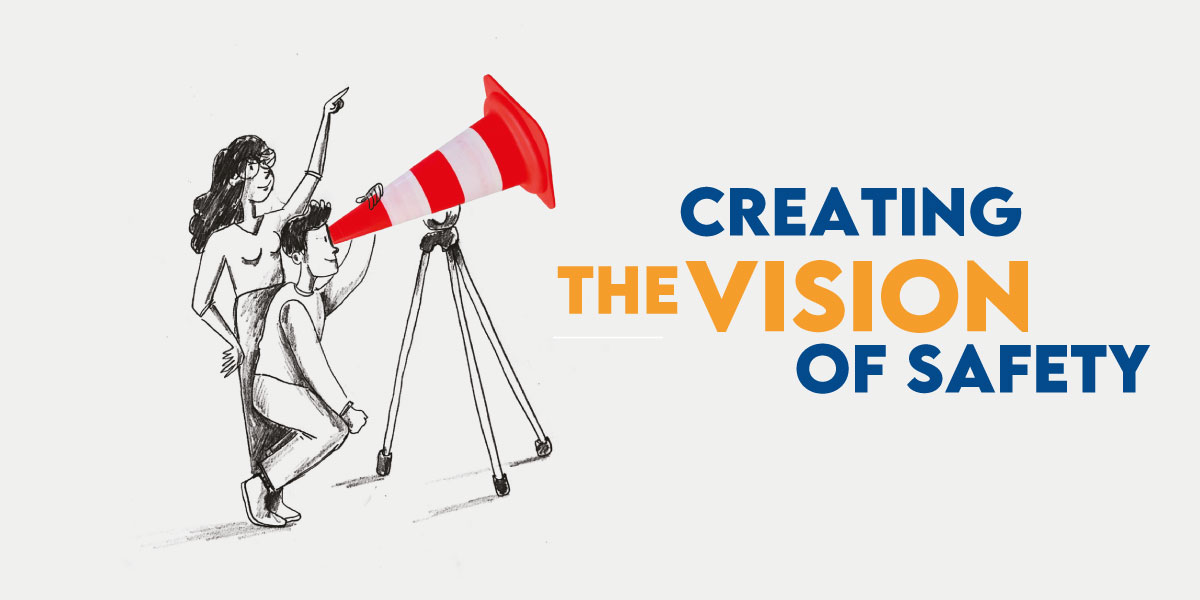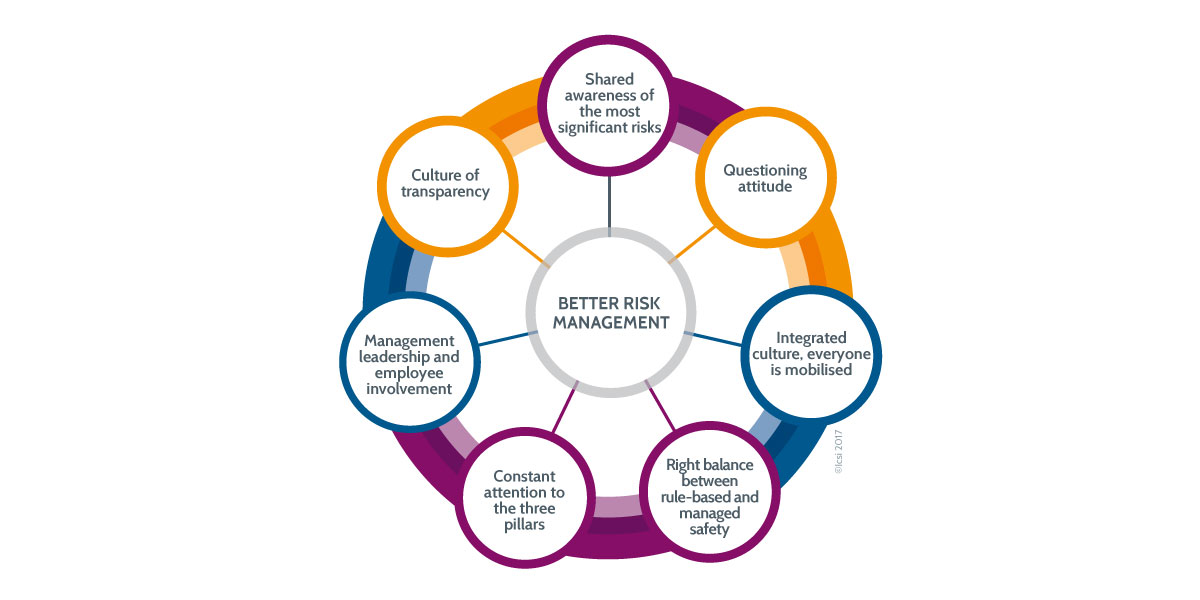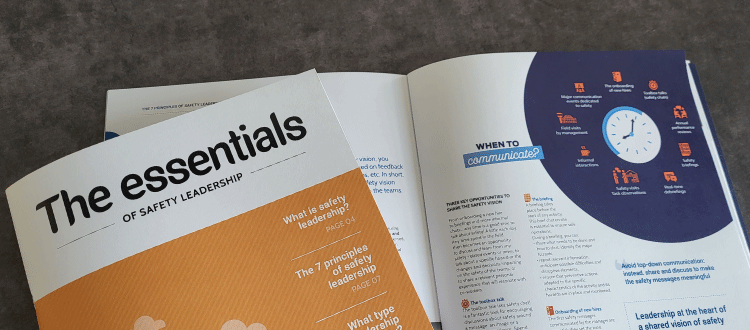Creating the vision of safety
 Creating the vision of safety
Creating the vision of safety
Creating the vision of safety means setting goals, identifying what the future should look like. This requires an upstream analysis of the existing situation, and sharing the need for change. It is then up to the safety leader to give meaning to the path that needs to be taken to achieve this vision, in order to motivate people, both individually and collectively, to work towards shared objectives.
Creating the vision is the 1st of the 7 principles of safety leadership.
Why is this important?
Who wants to set off on a journey without knowing what lies ahead? With no reason to go there? That is the challenge of developing the vision: set out where you want to go in terms of safety, and why the journey is worth the effort.
How do I create a vision of safety?
To engage the workforce, a company’s vision of safety must be idealistic, ambitious and desirable. Rather than say ‘Our goal is to reduce the accident rate by one point’, instead say ‘Our goal is that in 3 years’ time, we want to eradicate all serious and fatal accidents for both our employees and subcontractors’.
If everyone is going to commit to the process, the vision of safety must be shared by all members of staff. Employees must feel:
- that their manager or supervisor believes in it and, more importantly, that the organization believes in it; in other words, the vision is not just a slogan or wishful thinking.
- that their contribution is expected and needed.
Then, to put these ideas into practice, the vision of safety must be implemented at all levels of the organization, and resources must be made available that correspond to the scale of the goals to be achieved.
To bring this future to life, manager-leaders at all levels of the hierarchy – from high-level executives to team leaders – have a key mission:
- Develop and share an inventory of the current safety level
- Work with colleagues to set out what a desirable future looks like
- Break down the vision into practical axes for change
- Agree on realistic, limited objectives
- Clearly specify expected attitudes and behaviors
- Make a personal commitment to the transformation of the safety culture
The fundamentals of a safety vision
Among the attributes of a successful safety culture, the following 3, so-called ‘strategic’ attributes are fundamental to creating your safety vision:
- Focus on the essentials: to improve prevention of major risks and accidents
- Use organizational and human factors to make behavior safer
- Find the right balance between initiative-based and rule-based safety
As no single individual holds all the keys to safety, we must also consider a 4th attribute:
- Develop and maintain an integrated safety culture by involving everyone
The vision goes beyond a small group of top-level executives
Of course, there must be a strategic corporate vision, which sets out the main principals at the global level, and which brings on board as many people as possible. But much more operational visions, must also be put in place. They have different timeframes and perimeters, and reflect what is happening in the field, but they are just as necessary and complementary. Even within a very small group, you can develop your vision of safety, by identifying the improvements you would like to see, for yourself and your colleagues. And you can use the same skills and tools. Frontline managers: set out your own vision!
One way to create your safety vision
One way to create a new vision of safety is to project yourself into an ‘ideal’ future, where your leadership and safety goals have been achieved, and then look at what you have to do to get there. We call the exercise ‘projection’, and it can help to create a vision of safety. Although it is most often used by executive committees, it can be applied at any scale, onsite, by a team, etc.
Think about what you would like the future to look like as a function of 4 themes:
- Rituals: what practices, what meetings will become expected, unavoidable? For example: put in place safety moments, get to know the team before formal meetings begin, take a safety break, etc.
- Prohibitions: what practices and attitudes do you want to eradicate in the future? For example: turning a blind eye to an at-risk situation, entering a confined space without authorization, leaving my area without tidying it up, etc.
- Taboos: what subjects, which are never currently talked about, should we talk about in the future? For example: being able to talk about sanctions, situations where rules are not applied, cases where the manager does not set an example, etc.
- Symbols: what words, images, or gestures will have a particular meaning for the company?
One small tip: when you do this exercise, close your eyes, and project yourself 3 or 5 years into the future. Think big—forget about what is holding things back or any current limitations. Then open your eyes and ask yourself, who are the other people who can help you make progress, and turn your vision of safety into reality.
The Icsi vision seminar
A method to define a common, shared vision and reinforce your safety culture.





